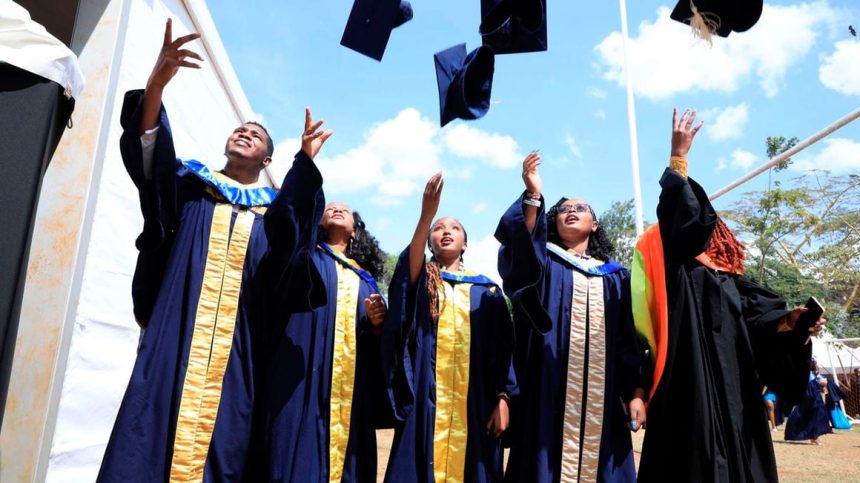Pending bills by public universities have ballooned to Sh60.2 billion due to unremitted statutory deductions, sacco dues, pension, bank loans and unpaid contractors.
This combined with dwindling State capitation and falling student numbers has worsened the cash crunch, which is crippling the public university operations.
To remedy this, the government has developed a funding model for higher education that will see needy households get more support than those from well-off families.
What is a university funding model and why is it being changed?
These are the criteria used to financially support government-sponsored students and institutions of higher learning for their smooth running.
The main reason the State is changing the funding regime is to address the uniform and quite an inequitable capitation witnessed under the differentiated unit cost (DUC) model, where the rich and the poor student receive the same amount.
The new funding framework seeks to offer students whose households are at the bottom of the pyramid equal opportunity in accessing university education and technical and vocational education and training (TVET).
What framework does this new one replace?
Currently, funding to universities is based on the DUC model where funding is pegged on the number of undergraduate students registered on the regular programme and the kinds of courses they take.
Under the DUC model, the government through the University Fund was expected to cater to 80 percent of the unit cost while the remaining 20 percent was borne by students and the institutions.
This has, however, not been the case with the government funding ratio dropping steadily over the years to 48.11 percent in public universities and 22 percent in private universities.
The implementation of the DUC kicked off in the financial year 2016/17, with critics fearing that it would favour big and older universities.
Before the DUC, each academic programme was allocated a flat rate of Sh120,000 per year per student.
What will funding be based on in the new funding framework?
Funding will be based on four criteria, choice of the programme, household income band, affirmative performance and government priority areas.
A Means Testing Instrument (MTI) will be applied to scientifically determine the need levels of students.
The instrument has eight variables, which have been used over the years and have been strengthened and linked to other databases to boost reliability.
The eight variables include parents’ background, gender, course type, marginalisation, disability as well as family size and composition.
By combining these variables, it is envisaged that the State will be able to determine the needs of the various households and fund them appropriately.
Based on MIT, students from rich backgrounds will get more loans than scholarships while the less able will get more scholarships than loans.
What are the major differences between the two models?
Under the new model, funding will be student centred and be apportioned according to their levels of need classified into four; vulnerable, extremely needy, needy and less needy.
Funding to students will combine scholarships, loans and household contributions on a graduated scale, which will be scientifically determined.
Unlike what has been the case, universities and TVETs will no longer receive block funding in the form of capitation based on the DUC whose sustainability has been a struggle following dipping in funding ratios from the government.
To what extent will the State fund learners?
Under the new funding model, the government will fully fund the vulnerable and extremely needy students who comprise 29 percent of those joining universities and TVETs this year.
The funding for these students would be through scholarships, loans and bursaries.
Needy students joining universities will receive government scholarships of up to a maximum of 53 per cent and loans of up to 40 percent and their households will only pay for seven percent of the cost of their university education.
Those joining TVETs will receive government scholarships up to a maximum of 50 percent and 30 percent in loans while their households will pay 20 percent of the costs.
When will the new model take effect?
The new framework will apply to the new cohort of students joining universities, with President William Ruto stating that it does not increase tuition fees.
It will be implemented starting this academic year 2023/24 and will commence with the new cohort of 173,127 students joining universities and 145,325 joining TVETs.
All continuing government-sponsored students will be supported in line with the previous existing (DUC) funding model.
What will aid parents and students make informed decisions?
Universities will be required to declare and publicize the actual cost of their programmes on the websites and share with Kenya Universities and Colleges Central Placement Service (KUCCPS) before every placement cycle.
Public universities are prohibited from levying additional charges or raising their fees without the approval of the University Funding (UF).
Allocation to affect the new model?
To facilitate the implementation of the new framework, the State has increased funding for university education to Sh84.6 billion from Sh54 billion allocated in the financial year starting July as loans and grants.
This translates to an allocation increase per student from Sh152,000 to Sh208,000.
The budgetary allocation for Tvets will in the coming financial year increase from Sh5.2 billion to Sh10 billion, translating to Sh67,000 per year per trainee.
What happens to GSS opting to enrol in private universities?
According to Education cabinet secretary Ezekiel Machogu, State-sponsored students opting to join private universities will have to foot their full tuition cost, in a policy shift targeted at resolving the funding crisis in public universities.




